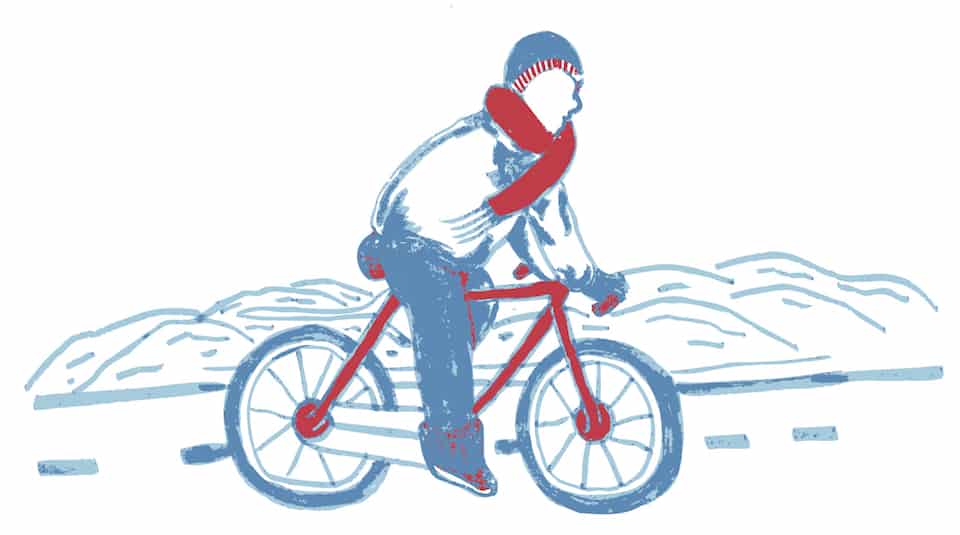[dropcap]W[/dropcap]inter is here, and it’s not leaving anytime soon. According to Bikechain’s president, Eugene Chao, that doesn’t mean you should stop riding your bike. If you haven’t tried winter cycling before but are looking to save money on TTC expenses, The Varsity’s got you covered. We checked in with the president of U of T’s not-for-profit bicycle repair shop to get tips on braving the cold on two wheels.
The Varsity: Why cycling?
Eugene Chao: “Even with the onset of winter, cycling remain[s] a superior mode of transportation in terms of speed and convenience. Traffic is already terrible in the city, and only gets rapidly worse with the appearance of snow, so I find that I continue to make better time on my commute than in a car. As for transit in the city, which, on the best of sunny summer days, is prone to overcrowding and failures, the appearance of snow adds so many uncertain factors that you’re as likely to get to your destination as to be stuck in a tunnel for half an hour with no explanation or apology. And even when it does work properly, do you really want to bookend your day by paying to shuffle onto a slushy, overcrowded bus where most of the passengers look like extras out of a Dayquil commercial?”
TV: What gear should you use?
EC: “Get some good lights. The days are so short in the winter that I am often racing the sun to get home in the evening. I would also like to take a moment to dispel the popular, but mistaken, notion that mountain bike tires are ideal for winter cycling. I think the idea stems from the associations of ruggedness and tough terrain conjured up by the phrase ‘mountain bike’, but the truth is that that tread design is intended to accommodate travel over loose rocks, dirt, and gravel. When used on snow instead, the snow tends to pack into the grooves. As the tires roll and the friction causes the snow to melt slightly, you get an effect similar to that of ice skates, and suddenly you are careening wildly along Bloor on your well-intentioned ice disks. You’re much better off with a wider tire with less pronounced tread intended for road use. Finally, for the bicycle itself, I would recommend ensuring you have access to a lower gear ratio on your bike. This will allow you to push each pedal stroke with less effort. Because you’ll then be exerting less force per stroke, it allows you to stay balanced and centered on your bicycle, making smaller, more easily controlled movements.”
TV: What’s the greatest struggle of winter biking?
EC: “The greatest challenge to cycling in the winter is probably the packed down icy-snow mixture that cars leave in their wake. The heavier the vehicle, the worse the packed snow. Short of black ice, which is a challenge to everyone, I find it to be the winter terrain most challenging and unpredictable to cycle on. Unpacked snow, unless it is very deep, is actually quite easy to move through. That, and the visions of what my commute might be like if I had gone to school in California.”
TV: Any final advice?
EC: “Ride within your ability, and take it slow. There’s a lot of bravado and machismo associated with the perceived “toughness” of a winter cyclist, and a lot of misplaced zealotry in the idea that to be a real cyclist you have to ride all through the year in all weather. I didn’t start winter cycling till I had built up the comfort and confidence in my own abilities, and you shouldn’t either; ride when and where you feel up to it.”
Correction (Wednesday, January 27, 2016): An earlier version of this article incorrectly stated that Eugene Chao is the owner of Bikechain.


